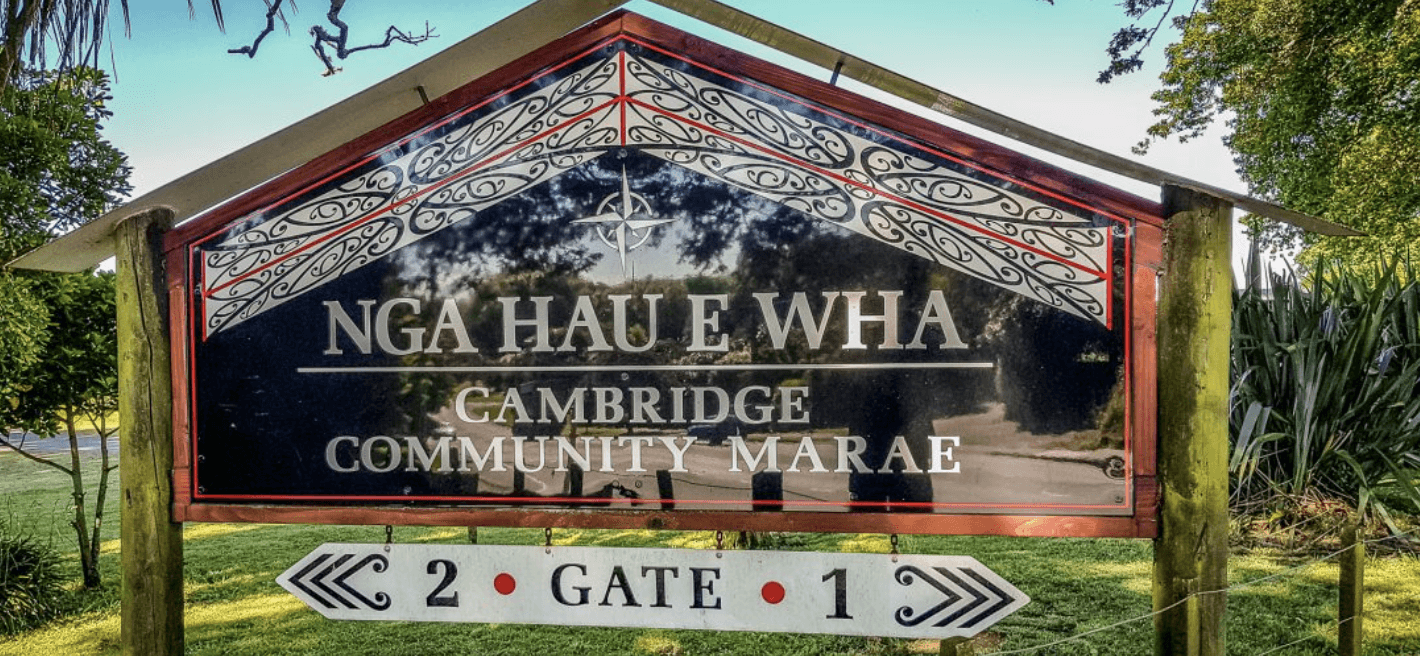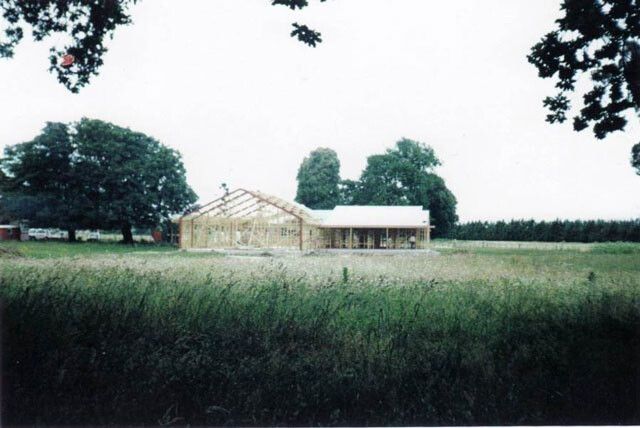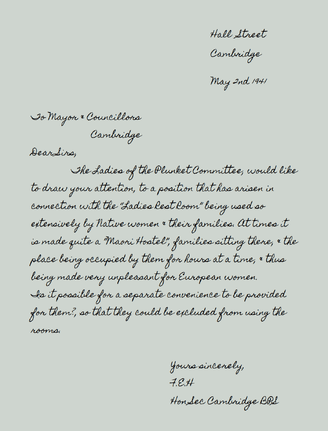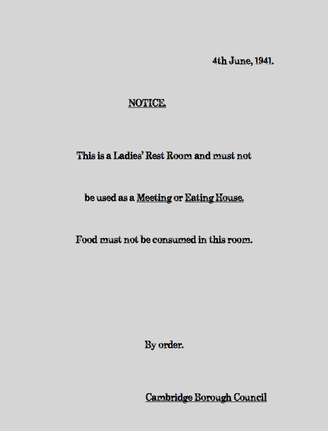
It actually happened ...
On 2 May 1941, the "ladies of the local Plunket Committee" wrote to the town mayor and councillors asking for a separate convenience to be provided for “the native women and their families who are occupying the ladies rest room so extensively, for hours at a time and making it unpleasant for the European women”. They wanted the natives to be excluded from using their rooms…
The Town Clerk replied on 27 May that they were unable to provide separate rest rooms for Māori women to use, but in the meantime they would “prevent the unreasonable use of the rest room, by depositing suitably worded notices”

By 21 August 1944 the Cambridge Borough Council were taking a “keen and sympathetic” interest in any suggestions made for the progress of Cambridge and benefit of the people.
The Works Committee recommended: That the door leading into the rest room at the Plunket Building be locked and a new entrance be provided to the rest room in the south west corner, with a view to a native rest room on property near the borough depot in Duke Street West. Unfortunately the land that was allotted to them was taken for the new Fire Brigade Station.
Eventually it was decided that a Community Centre / Māori hostel / Rest Room was the most suitable project. 1n 1953 at a meeting of the Māori Women's Welfare League, President Pare Clark welcomed D. Herewini, the District Welfare Officer, and a move to build a community centre was put forth by Kaora Harborne and seconded by Miss Martin who was the District Māori Welfare worker. She gathered donations from both Māori and Pākehā.
It would be fair to say at this point the project staggered, was deferred, considered too difficult and….shelved!
Strange decisions like levying every Māori family (not Pākehā) in the district were made, possibly reflecting the discomfort local Pākehā felt about the project.
By 1957 a site in the industrial area of Pope Terrace, on the Leamington side was considered appropriate as it was not close to a residential area. In other words, not close to Pākehā housing areas. Regardless, Māori and many Pākehā were keen to push ahead and start fundraising.
Eventually in 1966 a meeting was called in the Cambridge Town Hall to revive the Māori Community Centre concept, that would “serve not only these purposes but would be a means of bringing Māori and Pākehā together, and in this way could be of tremendous help, not only to the Māori people, but to the community as a whole”.
Local Māori from Maungatautari, Pohara, Tauwhare and Pukemoremore were glad to support the project in any way. Legal representations and submissions to the Cambridge Borough Council by Auckland lawyer John Tamihere resulted in the land at Pope Terrace being exchanged for the current site on the corner of Bracken Street and Pope Terrace, Leamington.
By 1990 the local newspaper announced: Marae a Reality!
"Twenty years of meetings, fundraising, corresponding, attending hearings and overcoming obstacles have ended. All the legal wrangles have been overcome and now the Cambridge Community Marae and cultural centre can finally become a reality."
| 1990 | Te Kaapo Campbell Clark of Maungatautari blesses the land on Bracken Street/Pope Terrace, later Ropere Tipene turned the first sod of earth | |
| 1991 | Te Kōhanga Reo building blessed by Piripi Samuels, Ngāti Hauā | |
| 1995 | Building of the Wharekai begins | |
| 2003 | Transportable building becomes the Wharenui |





